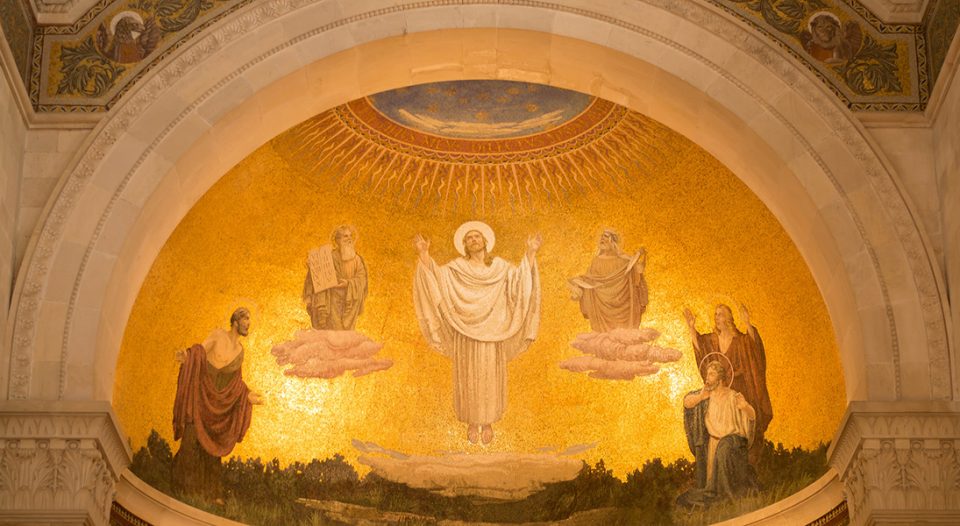Lectionary blog for Feb 27, 2022
Transfiguration of our Lord
Last Sunday after Ephiphany
Exodus 34:29-35; Psalm 99;
2 Corinthians 3:12–4:2; Luke 9:28-36
The Christian traditions around this time of year and the next several weeks are many and varied. I particularly enjoyed learning about the Slovenian Byzantine Rite Lutheran Church’s tradition of the last Sunday before Great Lent being called “Forgiveness Sunday.” This is a special day for reflecting on God’s grace and kindness, as God draws ever nearer, even as they begin to ready themselves for the Great Lent. The theme of God drawing near, full of kindness and grace, is especially relevant for this week’s Scripture readings.
The passage from Exodus about Moses’ encounter with God, and his subsequently shiny face, is one of my favorites. But I confess that the reading from 2 Corinthians steals some of the joy out of this text. I don’t focus on the veil as a means of creating distance. On the contrary, the Exodus passage seems to focus on encounter and closeness. I think this happens on two levels—the first being physical intimacy among people.
When Moses parts from God, after having chiseled out a second set of commandments, he doesn’t know that his face is shining. But Aaron and the princes of Israel are afraid of the light emanating from Moses’ face and hesitate to approach him. Still, Moses calls them to himself, to get over their fear and come hear the words that he has for them from God. Aaron and the leaders chose physical closeness over their fear, and they approach Moses. The details of coming from far to near are important!
Then, wanting to make sure that absolutely everyone hears what God has to say, all the Israelites draw near to Moses. The text doesn’t say that the average people were afraid of his face or of approaching him. Surely, a glowing face would be a strange sight, and I would have thought twice before approaching someone emitting rays of light. But Aaron, the ruling elders and the people all chose to draw near to a strange phenomenon because they wanted to hear the word of the Lord.
The brightening of Jesus’ face and clothing (and those of Moses and Elijah too) is about more than a neat light show. At least in the case of Moses, human faces shone previously when God was close enough to touch, when God acted in grace and kindness to protect while revealing Godself.
As I was preparing to write this and reading commentaries, my go-to interlocutor, the 11th-century French rabbi Rashi, asked a question that hadn’t occurred to me: Why does Moses’ face only begin to glow now? He had certainly spoken with God on numerous occasions. Moses, Aaron and the elders had even eaten a meal with God on the Holy Mountain (Exodus 24:9-11)! Why didn’t their faces glow then?
Rashi looked to Midrash Tanchuma (37), which says Moses’ face didn’t start glowing because of how much he heard from God, but, rather, after God touched it! When God was concealing the full view of God’s glory from him, God covered Moses’ eyes with the divine hand (Exodus 33:22-23). Ever after, when Moses would hear God’s voice from the tent of meeting or elsewhere, his face would come aflame from remembering the time that God had touched him. This is why Moses’ face only starts shining in chapter 34. The light was a sign of God’s intimacy and grace, protecting Moses while revealing Godself, if only partly.
Rashi’s question and Tanchuma’s answer help me think about the transfiguration of Jesus in a more generative light. The brightening of Jesus’ face and clothing (and those of Moses and Elijah, too, in Luke 9:31) is about more than a neat light show. At least in the case of Moses, human faces shone previously when God was close enough to touch, when God acted in grace and kindness to protect while revealing Godself. I think that is precisely what happened while Jesus was discussing the events that were to happen in Jerusalem shortly thereafter (Luke 9:31). In the crucifixion, resurrection and accension, God came close enough to touch several human bodies, and God’s grace, kindness and self were revealed more fully than ever before!
There is plenty of time to talk about metaphorical veiling and how we sometimes worry about how people will think about us and our relationship with God. Are we full of passionate intensity or just dully trudging through the long walk of faith? 2 Corinthians 3 is a useful discussion about that. But when we talk about humans covering their faces, we are dwelling on human responses and actions. I—and I mean just me—prefer to simply acknowledge that if someone’s face is aglow, that means that God has showed up. As we head into a period of preparing our hearts and our lives to celebrate the resurrection, let us always remember that God shows up before we could ever be ready, and touches us and changes us before we even know!





